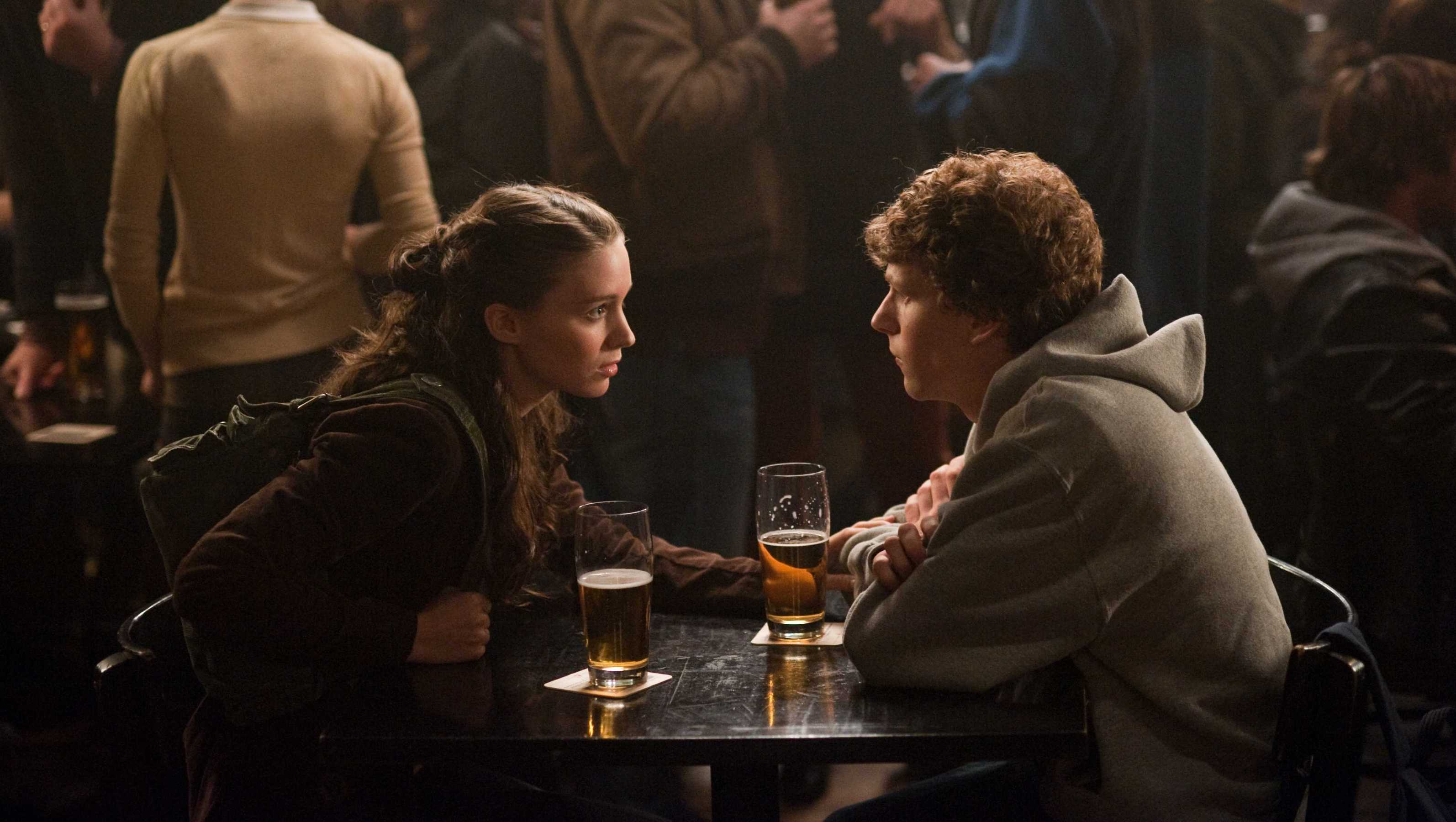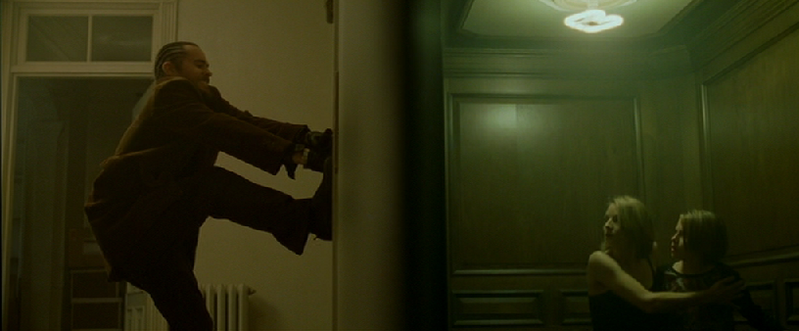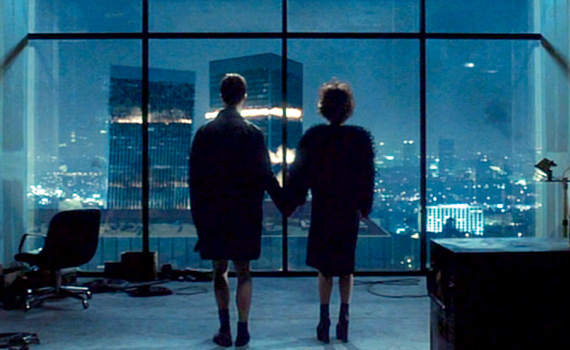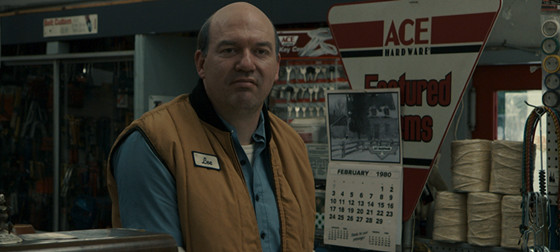5. Opening break up/title sequence from The Social Network

I don’t just mean the opening scene, I mean that followed by the title sequence leading up to arriving back in his dorm room. With Arron Sorkin dialogue it can be easy to get lost if directed wrong, but not only does Fincher make sure we keep up with every flippant overlapping quip, but doubly makes sure we know what of substance we need to take from it.
Starting in mid-quick fire conversation Fincher directs us round this pair of preppy college students with precision and purpose, meticulously making sure we know what to pay attention to and when, and all with three types of shots.
A two shot letting us see their intimacy, over the shoulders used to bring us closer to the characters and build the conversation, then boom, close-up, the climax of what has been said; making sure, if anything, we take that away from the verbal ballet they had been spewing: “Finals clubs” and “You’re an asshole”.
Then after this excellent character and story introduction, we get… Jesse Eisenberg lightly jogging back to his dorm room. While many directors would just cut to him there to keep the plot moving, Fincher uses this time to not only let us breathe but more importantly set the tone of the film.
The slow pans across the beautiful, lonely Harvard streets coupled with Trent Reznor’s hauntingly simple score set this film up as something far beyond the cash-in trendy story people thought it was going to be at the time, but instead as something methodically melancholy with subtle depths.
A good reflection of our lead character in hindsight as well, this title sequence makes sure the audience knows that, though this is the story of Facebook, that isn’t what it’s about.
4. Slow-mo from Panic Room

Essentially Fincher’s version of a blockbuster movie, the auteur of cool doesn’t see this as an opportunity to just sit back and fill the screen with lazy explosions and gun fights, but instead to tell a simple story with some of the most ludicrously cool and stylish camera movements ever put to film.
The extended long take that flies through a sodding coffee mug was a close runner up, but this heart stopping sequence that sees Jodi Foster running for her phone as her home invaders stand just outside the door way, just clinched it.
Shot in breath-taking slow-motion; the scene cuts between Jodi’s panicked scrambles as her phone lies just out of reach, and Forest Whitaker berating Jared Leto just outside the door; done with nothing but ambient sounds and the exaggerated thuds of the scrambling.
This is easily one of the most pulse-racing and over dramatic sequences in Fincher’s whole oeuvre, and sums up Panic Room perfectly – fun, over the top and shockingly tense.
3. You met me at a very strange time in my life from Fight Club

At its heart, behind all the satire, black comedy, and fighting, Fight Club is about a fairly normal guy just trying to take control of his life; take it back from the consumerist 9-5 monotony he never wanted, then take it back from the psychotic mad man he created to escape that. And those feelings all come to an explosive and oddly sweet head in the final scene.
What makes the end of Fight Club work so well is, on one side we have the dark, brooding, and brutal show down of our lead’s two personalities, the superman and the everyman, with the everyman finally letting go of his destructive counterpart by symbolically shooting Tyler in the head…his own cheek.
Then on the other, as the narrator amusingly shrugs off his gushing wound, he has a genuinely sweet reunion with Marla, the woman whose crazy matches his. They reconcile, hold hands like school kids, and watch the economy blow-up, all while the Pixies serenade them.
That final image (not counting Brad Pitt’s penis) is honestly as sweet and romantic as it is crazy, and was the out of the blue perfect note to close a story like Fight Club on. A film that revels in its contempt for humanity, Fincher knew it needed the sweet aroma of that very thing to bring the mayhem to a close.
2. I’m coming back for everything from The Social Network

If the opening set the film up to be much more than an origin story of everyone’s favourite time waster, this scene brings to a peak what the film was really about, themes as old as time – friendship, greed, betrayal. Masterfully crafted round the depositions of Mark and Edwardo, this is the emotional climax of the film. Where we find out how the friendship we’ve been following the ups and downs of throughout was finally broken; and like the worst things in life it came down to jealousy and money.
Fincher utilizes deep focus to make Edwardo pop from the surroundings, showing how he doesn’t fit there and making his devastation crystal clear. Never opting for the easy intense close-up, we’re kept mid-level with the emotions, personal but business, and treated to one of Fincher’s simplest but best tracking shots leading to the confrontation between the two, and a smashed Macbook.
Trent Reznor’s score creeps back in as the sordid details of Mark’s screwing over of Edwardo are numbered, and that eerie melancholy tone resonates with the shards of their broken friendship, blurring into angry static as Edwardo strips Mark and Sean’s personalities and motives down, and in a hushed rage tells them he’ll be back for everything before leaving.
This film, and this scene especially, silenced many of the nay-sayers who said Fincher could only excel with thrillers, and proved he could bring just as much intensity from raw emotion as from raw violence.
1. Just because you can’t prove it doesn’t mean it’s not true from Zodiac

How do you satisfyingly end a near three hour true-life investigative mystery thriller where the killer was never caught? Take a well calculated and researched stab at it and craft one of the most riveting exposition scenes ever put to film; a pulsating fight of wits and hope between Jake Gyllenhaal’s obsessed cartoonist, and Mark Ruffalo’s disillusioned detective.
Zodiac is a film that not only covers hours and years, but dozens of characters, locations, and theories all revolving around one burning question: who is the Zodiac? And in under five minutes, at a shitty table at an all-night diner, the entire case is laid out in front us; every crumb of information that been gathered is picked-up, argued over, and carefully placed to try and put this warped jigsaw together.
On paper this shouldn’t work, you can’t end a mystery with it unsolved and the characters just accepting that there’s nothing further they can do. But that’s what happens. Similarly to the opening of The Social Network, Fincher uses simple camera work to keep the focus on navigating the sprawling map of facts, dates and people we’re presented with.
He keeps the characters separate in mid-shots as they argue over theory vs hard fact, what they think and what they can prove, ‘til he gradually brings them together in a two shot as those start to mix, as Gyllenhaal’s puzzle starts to take shape to the detective. But even after the penny drops, and that definitive piece of evidence which surely proves the truth once and for all is revealed, all Ruffalo can do is shrug and thank him, because it just isn’t enough.
Fincher does the near impossible here. He gives us an emotionally satisfying who-done-it, while never definitively telling us who Zodiac is, if it really was Arther Leigh Allen or one of the dozen other suspects, and the use of different Zodiac actors throughout just proves we’re never meant to know.
It’s a serial killer film about the emotional and mental rabbit-hole the chase leads us and its characters down, not the capture; and this scene just makes sure we all still get the closure needed to escape it.
Author Bio: Mark Tonkin is a flourishing screenwriter still attempting to have a career, a poor comic strip illustrator, and an all-round only slightly pretentious film aficionado.